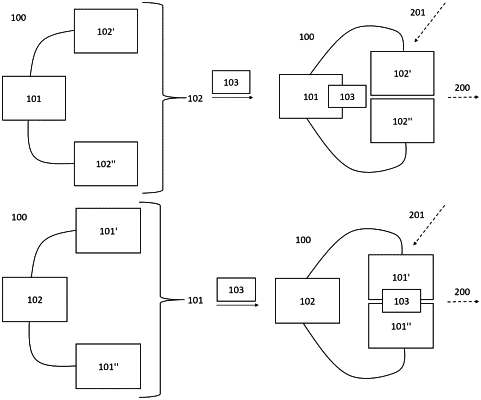| CPC A61K 49/0056 (2013.01) [A61B 5/1455 (2013.01); A61B 5/1459 (2013.01); A61B 5/14735 (2013.01); A61B 5/1477 (2013.01); A61K 49/0045 (2013.01); C07K 14/245 (2013.01); C07K 14/43595 (2013.01); A61B 5/14532 (2013.01); C07K 2319/20 (2013.01); C07K 2319/60 (2013.01)] | 17 Claims |

|
1. A device for detecting the presence of an analyte in a subject, the device comprising:
a light transmissive material configured to receive an excitation wavelength of light from a light source;
a waveguide comprising a cladding layer that surrounds a core material, the waveguide being configured to receive the excitation wavelength of light via a proximal end of the waveguide and to transmit the excitation wavelength of light along the waveguide to a distal end of the waveguide, the distal end of the waveguide extending from the device, the distal end configured to penetrate the skin of the subject and reside in the dermis of the subject;
a flange coupled to the waveguide and configured to allow the distal end to penetrate to the dermis of the patient;
an adhesive layer contacting the flange, the adhesive layer configured to secure the device to the skin of the patient; and
an indicator compound comprising a fusion protein, the indicator compound being disposed within the waveguide and being configured to receive the excitation wavelength;
wherein the fusion protein comprises:
a luminescent protein domain; and
an analyte binding protein domain;
wherein, when the analyte binds to the analyte binding protein domain, the indicator compound undergoes a conformational change from a first conformation to a second conformation;
wherein, when in the second conformation, the indicator compound is configured to receive the excitation wavelength and to emit a luminescent signal;
wherein the luminescent signal is received by the waveguide and transmitted to the light transmissive material;
wherein the light transmissive material is configured to deliver the luminescent signal to a luminescence detector.
|